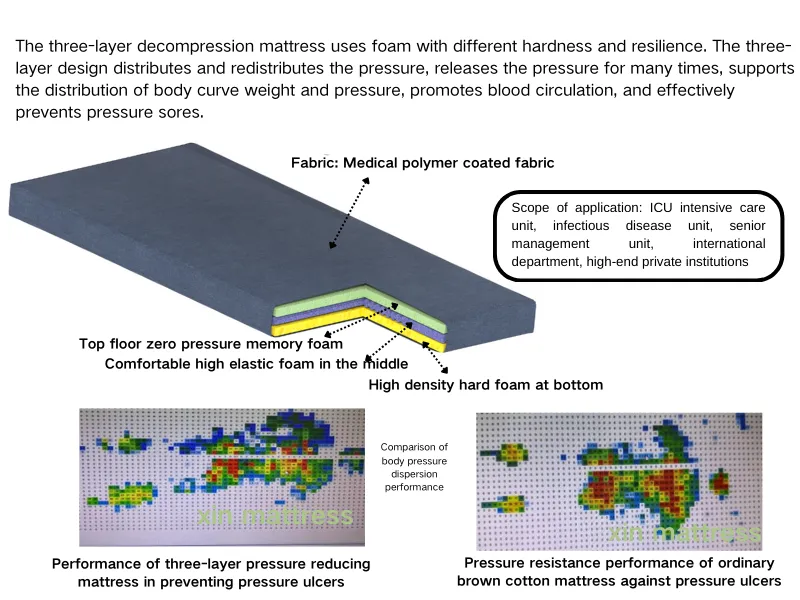Intelligent Healthcare Bed Solutions for Enhanced Patient Comfort and Safety
Smart Medical Bed Service Revolutionizing Patient Care
In the realm of healthcare innovation, the advent of smart medical bed services stands out as a significant breakthrough. As technology continues to merge with healthcare, these advanced beds are transforming the patient care experience, providing enhanced comfort, safety, and monitoring capabilities. This article delves into the features, benefits, and implications of smart medical bed services in modern healthcare settings.
Understanding Smart Medical Beds
Smart medical beds are equipped with cutting-edge technology that goes beyond traditional hospital beds. These beds are engineered with sensors, automated features, and connectivity options that enable real-time monitoring of patients’ vital signs, movements, and overall well-being. They are designed to adapt to the individual needs of patients, improving the quality of care and facilitating a quicker recovery process.
Key Features of Smart Medical Beds
1. Vital Sign Monitoring One of the most significant advantages of smart medical beds is their capability to continuously monitor vital signs such as heart rate, blood pressure, and oxygen saturation. This data is transmitted in real time to healthcare providers, allowing for timely interventions if any anomalies are detected.
2. Pressure Ulcer Prevention Many smart beds feature pressure-relieving technologies that automatically adjust the bed’s position and surface to minimize the risk of pressure ulcers. These adjustments are crucial for immobile patients who are at higher risk of developing skin-related complications.
3. Position Adjustment Patients have different requirements based on their conditions. Smart medical beds can be electronically adjusted to provide optimal positioning for comfort and therapeutic needs, which can greatly enhance the patient’s experience. This is particularly beneficial for patients recovering from surgery or those with respiratory conditions.
4. User-Friendly Interfaces With intuitive controls, both patients and healthcare providers can easily operate smart beds. Some models come with touchscreens or remote controls that allow for seamless adjustments, ensuring that patients receive the best possible care with minimal discomfort.
5. Data Integration Smart medical beds can be integrated with hospital information systems, enabling healthcare providers to have a comprehensive view of a patient’s condition. This integration supports better decision-making and personalized care plans tailored to individual patients.
smart medical bed service

Benefits of Smart Medical Bed Services
The implementation of smart medical bed services presents several advantages to both patients and healthcare facilities
- Enhanced Patient Safety With continuous monitoring and automated adjustments, the risk of falls and injuries is significantly reduced. Alerts can be generated for healthcare providers if a patient is attempting to get up unassisted, allowing for immediate support.
- Increased Efficiency Healthcare providers can save time through automated monitoring and alerts, freeing them up to focus on direct patient care. This efficiency can lead to a higher standard of care and improved patient outcomes.
- Cost-Effective Solutions While the initial investment in smart medical beds may be higher than traditional beds, the long-term savings from reduced complications, shorter hospital stays, and optimized care can justify the expense. Hospitals can experience lower operational costs as a result of fewer adverse events.
- Improved Patient Experience Comfort and personalized care are paramount in patient recovery. Smart beds enhance the overall experience by allowing patients to feel more secure and in control, which can lead to higher satisfaction rates.
Challenges and Considerations
Despite their numerous benefits, the deployment of smart medical beds is not without challenges. Issues such as initial costs, the need for staff training, and potential technical malfunctions must be addressed. Additionally, there is a need for continuous upgrades and maintenance to keep the technology effective.
Conclusion
The integration of smart medical bed services into healthcare facilities is a testament to how technology can enhance patient care. By improving safety, efficiency, and overall patient experience, smart medical beds are setting new standards in healthcare delivery. As the health sector continues to evolve, embracing innovative solutions like smart medical beds will be crucial in meeting the needs of patients and providers alike, ultimately leading to a healthier future for all.
-
The Effect of Coconut Foam Mattress Breathability and Humidity Regulation on Improving Sleep QualityNewsJul.03,2025
-
How Wave Mattress Systems Improve Blood Circulation During ImmobilityNewsJul.03,2025
-
The Climate-Adaptive Sleep Revolution: Exploring the Benefits of Cooling Gel Memory Foam MattressesNewsJul.03,2025
-
Exploration of the Role of Coconut Foam Mattress in Preventing Bedsores in the ElderlyNewsJul.03,2025
-
Comparing Wave Mattress and Air Mattress: Which Is Better for Medical Use?NewsJul.03,2025
-
Analysis of Comfort and Environmental Performance of Natural Latex and Coconut Foam MattressNewsJul.03,2025
-
Multi-Layer Construction for Enhanced Performance in Gel Mattress PadNewsJun.24,2025

